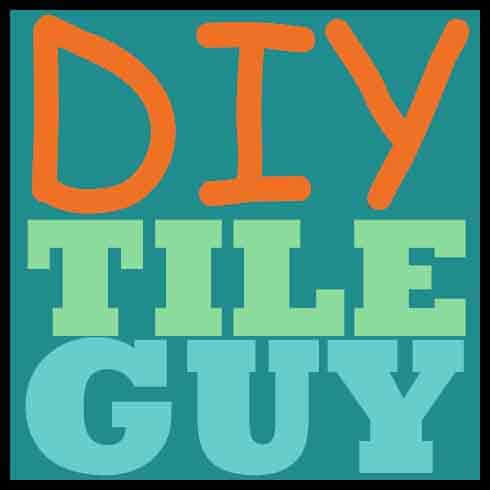It’s time to redo your old, musty shower. So, you head down to the local box store only to find several different tile backer board options for covering the walls.
The following thoughts are going through your head:
- Is the newer foam backer board any good?
- Please, not cement board again.
- What about drywall? It’s going to be covered with tile…
I’m going to break down each choice by category and cover the finer points of each.
Estimated reading time: 8 minutes
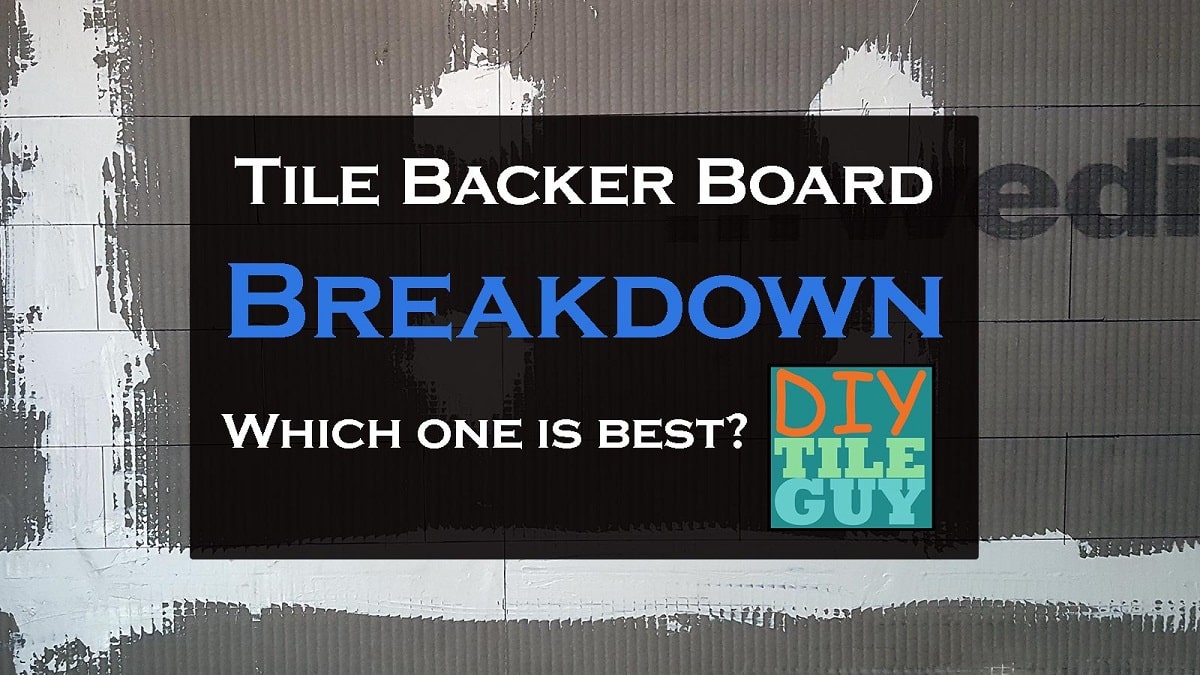
When it comes to installing a tile backer board, you typically have the following choices:
- difficult to install and cheap
- easy to install and expensive
Which Shower Tile Backer board is best?
We’ll start with:
Drywall as a Tile Backer
I hate to start off negatively, but drywall in a wet area is a major no-no.
Tiling over drywall, often incorrectly referred to as the brand name Sheetrock, in dry areas like kitchen backsplashes and wainscot walls is perfectly fine.
But drywall in a wet area like a shower is not good.
This also goes for moisture-resistant drywall, also known as greenboard. It’s my understanding that greenboard isn’t building-code approved for residential wet areas anymore.
If drywall gets wet, it expands and swells and will ruin any tile that you’ve installed on it. There are better options.
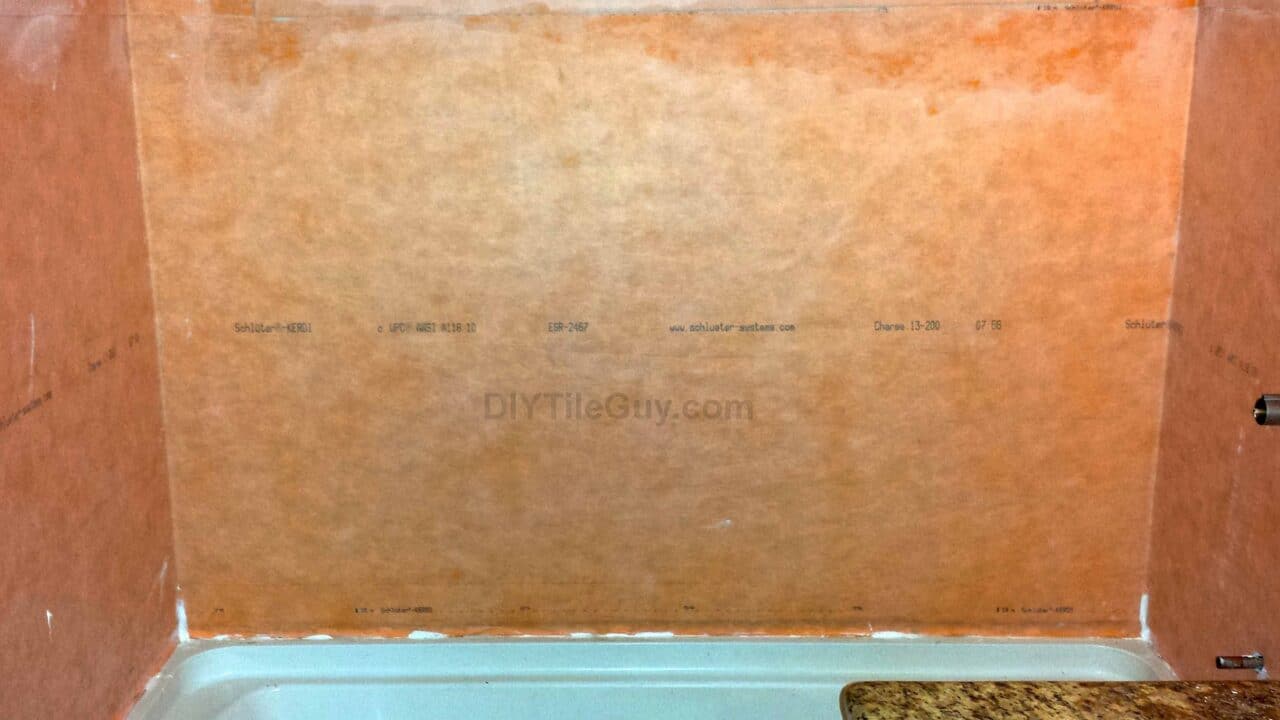
Schluter Kerdi Installed over Drywall Backing
When you cover drywall with a completely waterproof barrier like Schluter’s Kerdi membrane, things change. In fact, Schluter actually recommends drywall as a backing.
The thinking is that as long as there’s a completely waterproof membrane on the front of the drywall, the wallboard will never get wet.
Factor in the fact that drywall is easy to install and easy to thinset over, and you can see the appeal of waterproofing your shower this way.
Personally, I don’t like it. If everything goes as planned, you shouldn’t have any issues, but if you make one mistake, then you’ve just compromised your whole shower.
If a pipe or faucet ever leaks in the wall, this will ruin your shower. Furthermore, if another trade, such as the shower glass installers, makes a mistake, then you’ll be fighting over who pays for what.
Finally, if water wicks past your Kerdi seams, as some YouTubers claim, it is conceivable that the drywall could swell over time.
When I install Kerdi, I always use cement board. The cost is not much more, and the insurance is worth it to me.
Further, I follow Schluter’s thinset recommendations for the Kerdi Shower System and use their excellent All-Set, a modified ANSI A118.15 mortar. The Kerdi membrane is installed using the Kerdi trowel and the tile is installed with whatever trowel size will give me the proper mortar coverage.
Bottom line: if there’s drywall on your shower walls, it had better be a Kerdi installation. Otherwise, it’s being done wrong.
DIYTileGuy’s Rating: No. With Kerdi- hmmmm….ok.
Denshield and Similar Backer Boards
This category of products is called glass-mat gypsum backer board, and it has basically replaced the green board mentioned earlier.
It is made of moisture-resistant gypsum, but it also has a waterproof coating on its face. It installs similarly to drywall and is economical.
The new green board
In fact, it’s usually the drywallers that install it. Because of these factors, it is the new favorite of home builders and house flippers everywhere.
Where they used to use green board back in the 1980s, they now use this new gypsum-hybrid.
In new construction tract homes, the drywall crew (and oftentimes the tile installers) typically don’t know how to waterproof the seams, screw holes, and edges properly.
But it’s cheap and lasts long enough, which is music to most tract home builders’ ears.
DIYTileGuy’s Rating: Minimal
Hardibacker and similar backer board
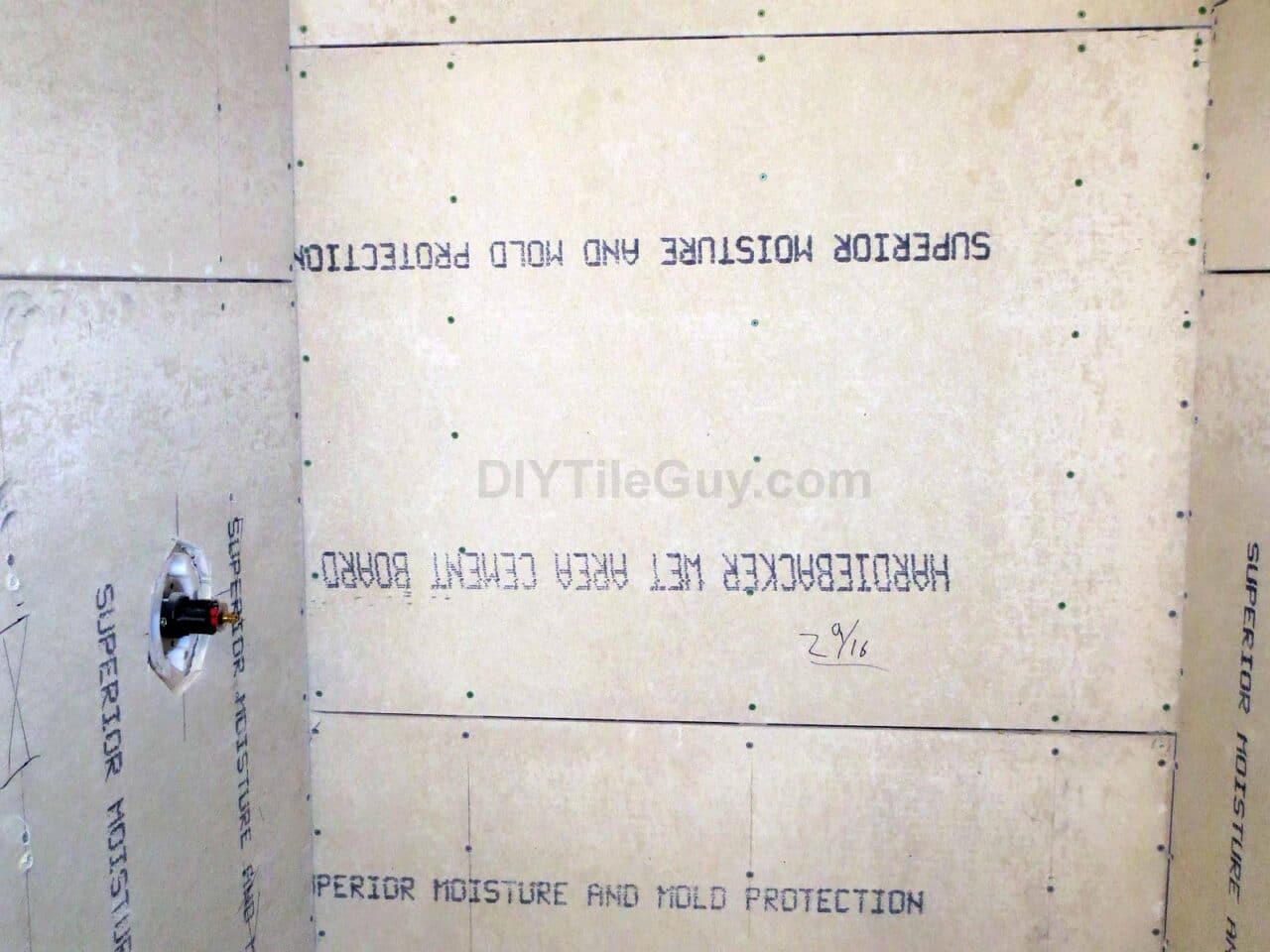
You’ve probably heard of Hardiebacker tile backer board. Fiberock is another popular product in this category. It’s a gray/beige colored board and is available at any home improvement box store.
These products belong to a category called Fiber-cement boards. Fiber cement and cement boards are closely related.
The tile backer boards mentioned above are fairly easy to cut by scoring and snapping. But Hardiebacker and its competitors don’t cut nearly as easily. They are much stiffer and denser.
Cutting it in half is much easier than cutting a 1-inch strip off the edge.
You can use a skill saw or handheld grinder with a diamond blade to cut it, but it will get dust everywhere, including your lungs, if you don’t wear a mask.
Some have found that Hardiebacker shears work well and don’t create too much dust, but the drawback is that the edge isn’t always a clean cut.
When installing, make sure to use the proper screws (or galvanized roofing nails). I prefer screws because they don’t bang on the wall and cause cracking in the sheetrock in the rest of the room.
The seams should be taped with alkaline-resistant mesh tape and thinset.
Hardibacker isn’t waterproof
But when it comes to getting wet, these fiber cement tile backer boards hold up well. They will soak up water but will dry out without losing their form.
These types of backer boards absorb moisture. Consequently, Hardibacker should have a water barrier when in a shower or other wet areas.
Either a vapor-type barrier behind the board or a waterproofing membrane on the front. This can take the form of a sheet membrane or a paint-on liquid.
See these posts to learn more about the basics of waterproofing showers and how to build a shower pan.
DIYTileGuy’s Rating: Good
Cement Backer Board for Shower Walls
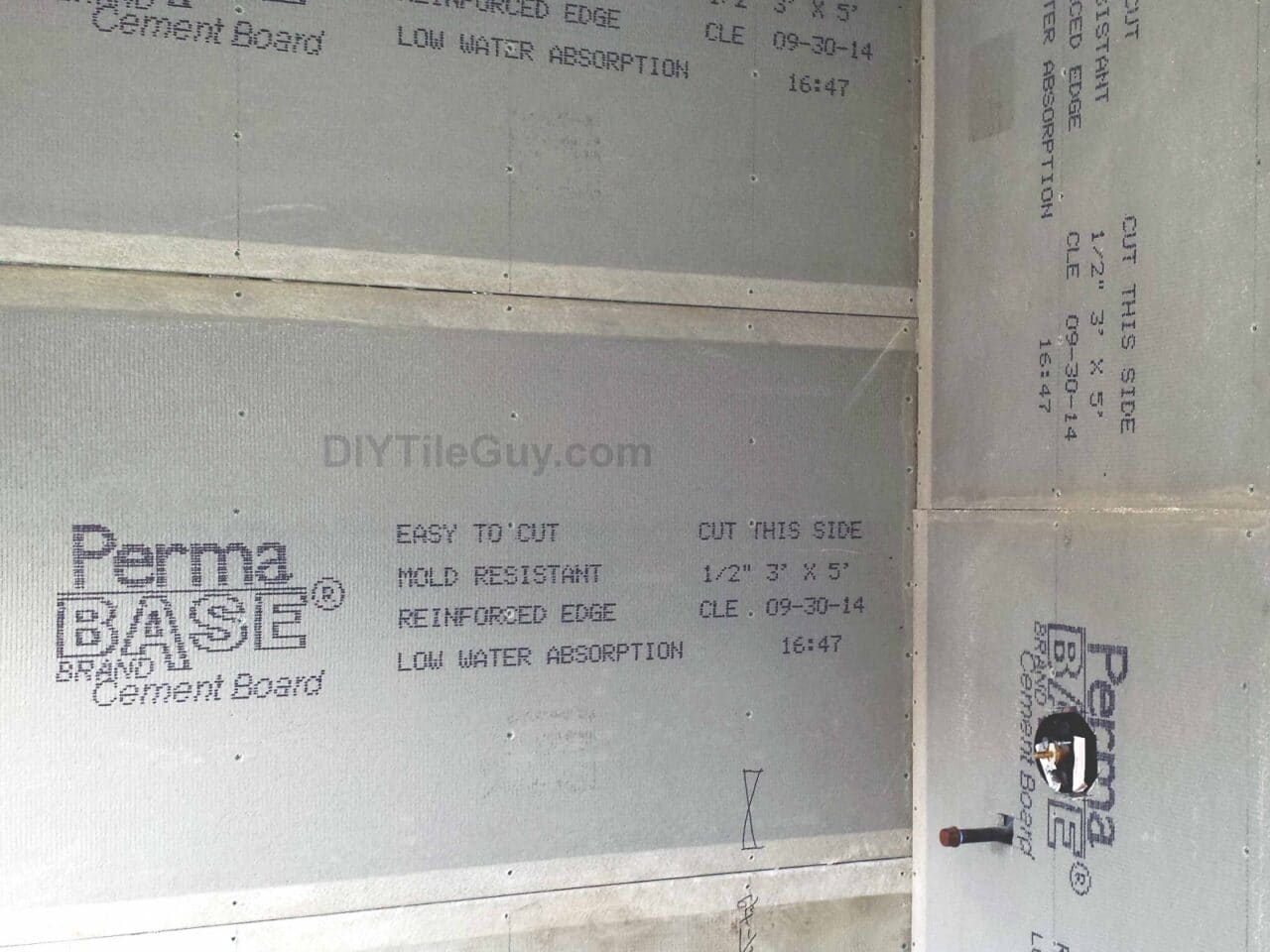
Popular Cement board brands are Durock and Permabase.
Like the fiber cement boards, these can be difficult to cut. The difficulty comes not so much from the stiffness but from edges that crumble. It does take some getting used to.
Additionally, they’re heavy which makes them hard to hold on to the wall while you start your screws.
Cement board in wet areas
Modern cement boards have reinforced edges, which do a better job of accepting fasteners. Also, Durock and Permabase have lower water absorption than the fiber cement boards listed above.
Note: Industry standards require that a water barrier is used with these products despite their lower absorption rate. No, cement board is not waterproof.
See also my tips for installing cement board over floors.
DIYTileGuy’s Rating: Better
Foam Tile Backer Boards
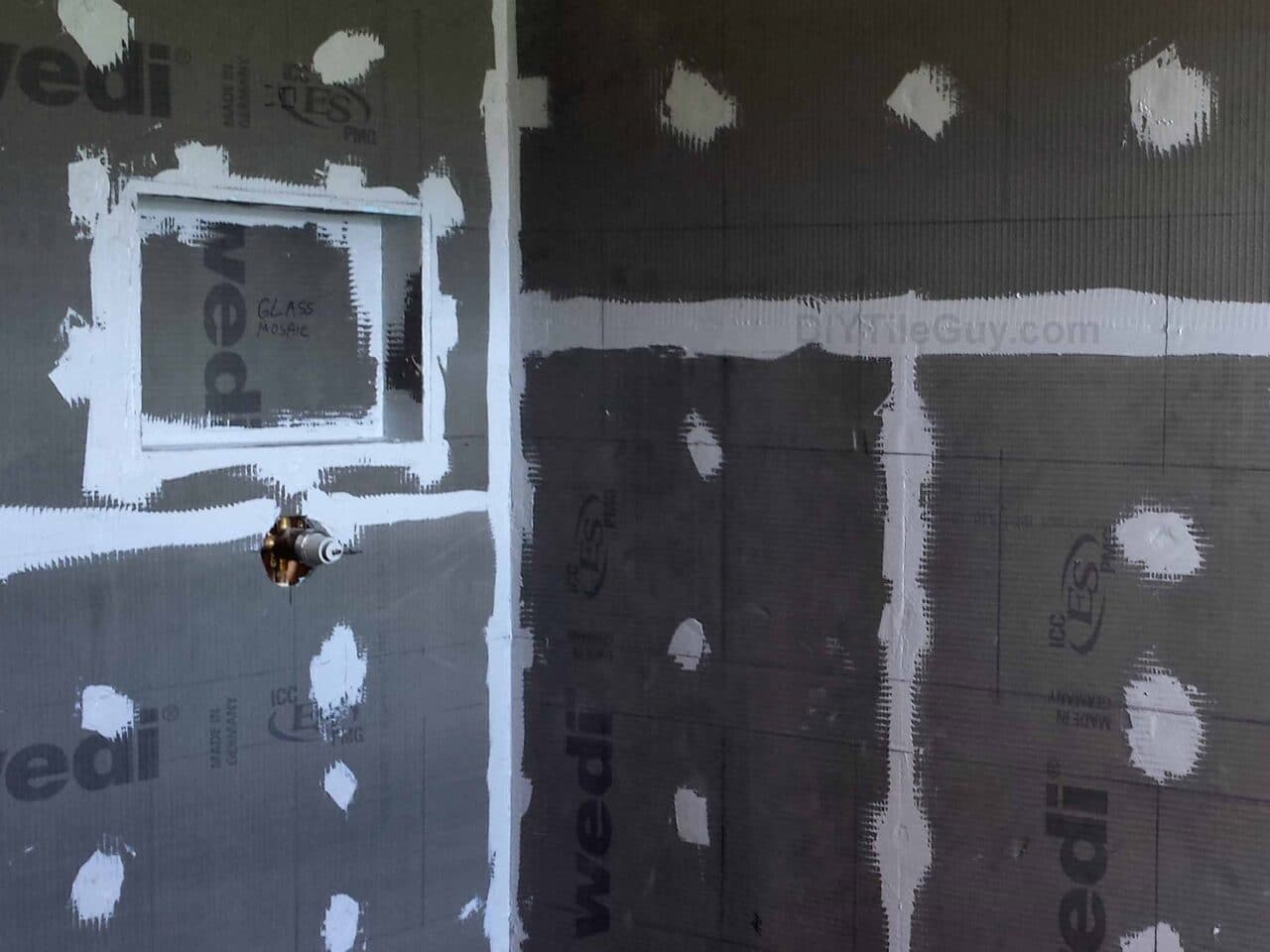
Foam backer boards have exploded into the marketplace. Popular name brands are:
- Wedi Board
- Schluter Kerdi-Board
- Laticrete Hydroban Board
- HydroBlok
- Johns Manville GoBoard
Along with store brands such as Everbilt Watershield Shower System at Home Depot and Sentinel Cement Foam Board sold at Floor & Decor.
Waterproof Foam Backer Board vs Cement Board
Foam backer boards have some big advantages over the previously mentioned options. They are:
- Lightweight
- Don’t damage the walls as you carry them into the house and upstairs.
- Easy to cut
- Waterproof
However, it should not be concluded that all of the products are the same or will perform similarly. You should do your research on what’s available to you and how it’s to be installed.
The big drawback of waterproof foam backer boards is the cost. Not just the cost of the foam panels but also the installation accessories. Most of them have their own fasteners, their own sealant for sealing the seams and penetrations, as well as banding, valve seals, and pipe seals.
When it comes to performance, foam backer board is the best choice for shower walls.
DIYTileGuy’s Rating: Best
Check out my post on installing GoBoard, which was a sponsored post at that time. I also have an installing GoBoard YouTube video, which is decently popular.
Best Backer Board for Shower Comparison Chart
*Rigidity depends on the brand. Some are considered very flexible, while others would be considered rigid.
**The products have a moisture-resistant gypsum core, which is better than normal gypsum drywall, but it is still gypsum-based
***An additional waterproofing membrane can be applied to these products to make the surface waterproof. Note: Kerdi is one of the only waterproofing membranes that is authorized by the manufacturer to be applied over drywall
There you have it. The rundown on which tile backer boards are best with my own rating system. Let me know what you think in the comments.
Be sure to check out my post on shower waterproofing basics.
